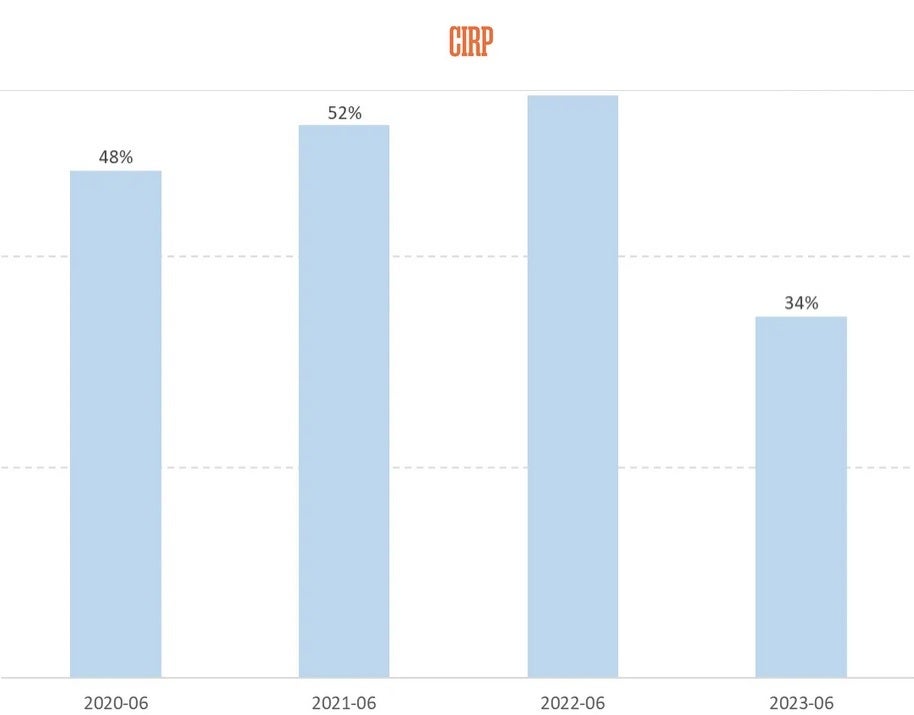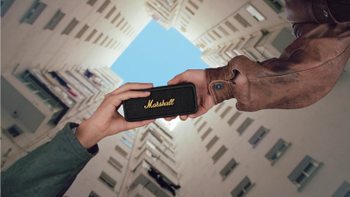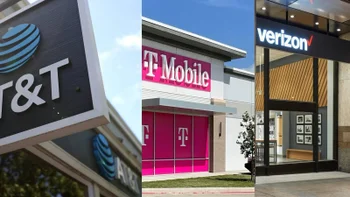A huge reversal occcured last quarter with U.S. iPhone buyers that Apple can't be happy about

During Apple's fiscal third quarter, the three-month period that ended in June, iPhone revenue was $39.67 billion which was a decline of 2.4% on an annual basis and slightly trailed Wall Street estimates. Last week Consumer Intelligence Research Partners, which you might know better as CIRP, reported that the weighted average retail price of the iPhone in the U.S. was $948 at the end of the fiscal third quarter compared to $988 at the end of the fiscal second quarter.
CIRP finds that a change in the mix of models purchased and fewer storage upgrades is pushing U.S. iPhone revenue down
CIRP blamed the lower average retail price for the iPhone on a subtle change in the mix of models being purchased. For example, during the fiscal third quarter, the lower-priced iPhone 14 and iPhone 14 Plus made up 36% of U.S. sales during the quarter. During last year's fiscal third quarter, the comparable iPhone 13 and iPhone 13 Pro accounted for only 30% of iPhone sales in the States.

The percentage of U.S. iPhone buyers upgrading their storage each quarter is in a downtrend
This week, CIRP is looking at a trend that could be alarming for Apple. Typically, iPhone buyers will spend the extra money it takes to upgrade the storage capacity of their phones. The minimum storage on older models and the SE line is 64GB and 128GB on the newer models. Consumers will have to shell out an extra $100 or $200 for each upgrade as they climb up the storage ladder. It costs $500 to upgrade the iPhone 14 Pro models from the 128GB minimum to the 512GB maximum so you can see how increasing storage can contribute mightily to iPhone revenue.
However, this trend reversed starting in June as only a third of U.S. iPhone buyers opted to upgrade their storage. The previous quarter, which ended in March, saw 60% of iPhone buyers in the States spend extra for more storage. In the year-ago fiscal third quarter, 55% of the consumers who purchased an iPhone paid up for additional storage. So the June quarter revealed a new trend and it is not one that Apple wants to see continue.
Apple needs to figure out why fewer iPhone buyers are paying up to upgrade their storage
At the beginning of this article, we pointed out how the weighted average retail price of the iPhone in the U.S. fell to $948 at the end of the fiscal third quarter compared to the end of the fiscal second quarter. CIRP says that if 25% fewer iPhone buyers decided to spend $100 for a storage upgrade, that would have accounted for $25 of the quarter's $40 decline in the weighted average retail price of the iPhone in the U.S.
What Apple needs to do is figure out why iPhone buyers aren't spending to upgrade the storage on their newly purchased iPhone units in the U.S. The economy is one reason and it is also possible that consumers are realizing that they have overestimated their storage needs. When I bought my Pixel 6 Pro, I purchased the 512GB model and have used only 14% of its capacity, or 81GB. When I bought my iPhone 11 Pro Max in 2020, I paid up for 256GB of storage and have used less than half that amount.
It will be interesting to see if this trend continues when the iPhone 15 series becomes open to pre-orders next month. The latest rumors suggest that we will see the iPhone 15 line introduced on September 12th with pre-orders beginning on September 15th. The release date for the new line could be September 22nd.
With rumors that Apple will be hiking the prices of the iPhone 15 Pro and iPhone 15 Pro Max by $100 and $200 respectively, we could see a larger decline in the percentage of iPhone 15 buyers in the States not willing to pay more for additional storage.
Follow us on Google News














Things that are NOT allowed:
To help keep our community safe and free from spam, we apply temporary limits to newly created accounts: